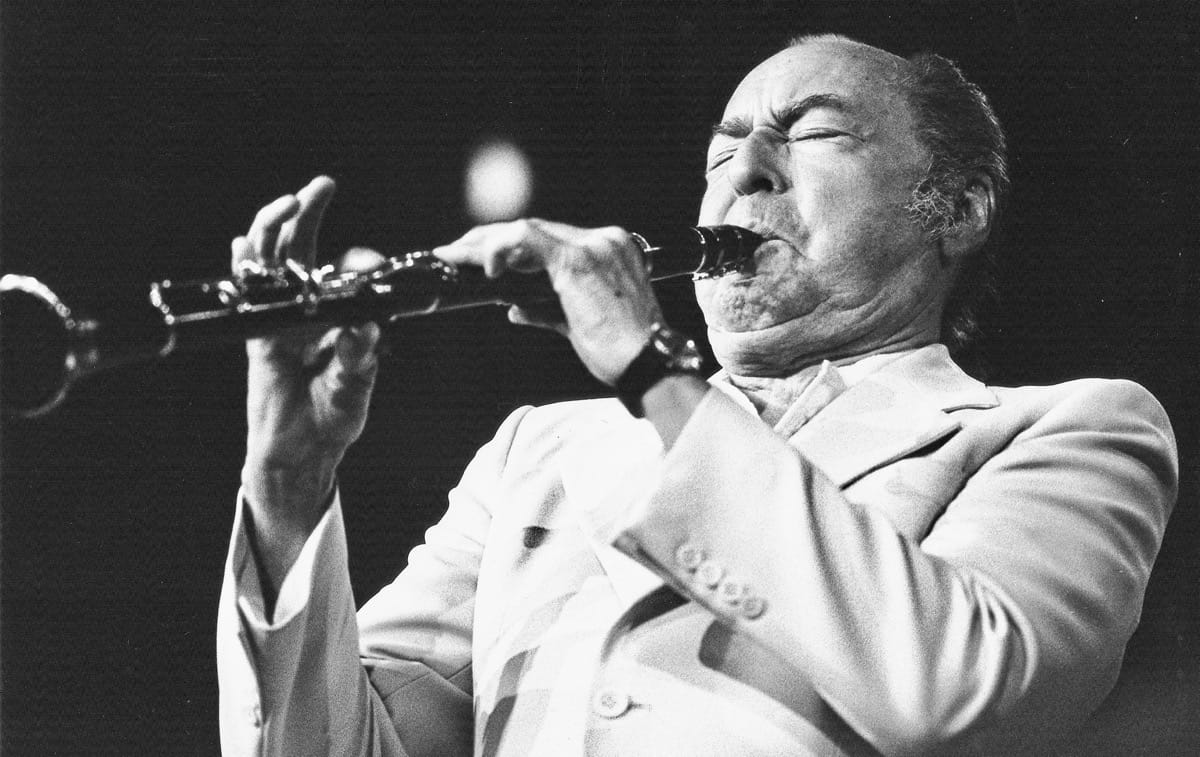
Saxophonist-bandleader Curt Hanrahan ( standing, far right) conducts the Milwaukee Jazz Orchestra. Photo by Leiko Napoli
The Milwaukee Jazz Orchestra will perform an album-release concert for Take it All at 6 p.m. Sunday Aug. 21 at the Racine Theater Guild, 2519 Northwestern Ave., Racine. For advance tickets, visit: MJO tickets
Is the jazz big band a relic of the swing era? Well, there’s still power in numbers, and wider musical vistas to explore. Despite inherent costliness, the art form has remained vital and evolving with such distinctive ensembles as The Maria Schneider Orchestra, The Lincoln Center Jazz Orchestra, The Mingus Big Band, Darcy James Argue’s Secret Society, John Beasley’s MONK’estra and The Vanguard Orchestra. The Brian Lynch Big Band won a Grammy award in 2020, led by the Milwaukee-raised trumpeter-composer-band leader.
Add the Milwaukee Jazz Orchestra to that list, with their auspicious second album, Take it All. It reveals a full plumbing of orchestral resources with both advanced contemporary aesthetics and catchy grooves aplenty. The MJO hardly emerged out of the blue. For 12 years, orchestra leader Curt Hanrahan led the UW-Milwaukee Jazz Ensemble, and the annual Woody Herman Jazz Festival, before retiring in 2017.
At the core of the new orchestra’s personnel is the synchronistic 30-plus-year-old jazz fusion band OPUS (which will open the Racine concert for the MJO). Between Hanrahan and his brother, drummer/co-bandleader Warren Hanrahan, they’ve performed with numerous big bands of the past, including Arturo Sandoval, Glenn Miller, Tommy and Jimmy Dorsey, Frank Sinatra Jr., Harry Connick Jr., Lawrence Welk and Woody Herman’s band led by Frank Tiberi.
“I love all big bands and have observed, listened and learned from many of them but my main influence has always been the benevolent Woody Herman,” Hanrahan says. “The Milwaukee native was on the road for close to 50 years with various bands and ‘Herds’ and produced some of the most iconic and legendary jazz musicians, composers/arrangers that this American art form has to offer. Our jazz festivals are modeled after his Woody Herman/Sister Fabian scholarship and educational programs that began in the mid to late sixties.”

Milwaukee-born clarinetist-saxophonist Woody Herman. Courtesy Jazz Journal
Perhaps there’s hometown bias in Hanrahan’s affection for Herman’s “Thundering Herds,” but that big-band leader always forged bridges between swing orchestras and modern jazz. Jazz historian Ted Gioia writes, “Herman’s evolution from sweet music to traditional jazz to modern jazz is almost unprecedented in the history of music. For Woody Herman is best understood…as a catalyst. His talent lay in enabling – spurring those around him to their deepest creative currents, inspiring them, letting them ‘loose’.” Herman’s second Herd debuted the “Four Brothers” band, with a section of three tenor saxophones and one baritone, which provided a template for what would soon be called cool jazz.

Album cover courtesy Spotify
Accordingly, The MJO projects through a forward-looking lense, with arrangements that facilitate rather than burden soloists and ensemble flair. The title tune “Take It All” opens with short phrases building suspense, then layers into dissonant yet alluring harmonies with a complex series of snapping ensemble accents. Tenor saxophonist Kyle Seifert delivers a measured solo rumination until the second chorus’s rising intensity driven by the big ensemble. Trumpeter David Katz provides deft, warm counterpoint, a la Thad Jones, to a sumptuous climax.
The second tune, “We All Love Eddie Harris,” reflects saxophonist Harris’s penchant for a cool but funky vamp that allows sassy rhythmic licks from Seifert, and quotes liberally from Harris’s swaggering, interval-skipping jazz classic “Freedom Jazz Dance.”
Ensuing material ranges from a tricky Oscar Peterson adaptation of the vintage finger-snapper “Sweet Georgia Brown” to “Covidity,” a Hanrahan piece reflecting the “angst of the pandemic era,” yet inspired by Elvin Jones’s Live at the Lighthouse album, a blazing hallmark of post-Coltrane jazz.
“Souljourner” closes the album with a transporting swirl of woodwinds detouring into a gritty jazz-fusion guitar solo from Steve Lewandowski. The MJO demonstrates how bigger is better when the outcome embraces a panoply of compelling moods and stylistic effects, allowing the listener to “take it all” in.
For information on the MJO, visit: https://www.mjojazz.com/
________________
This article was previously published in The Shepherd Express: MJO article

